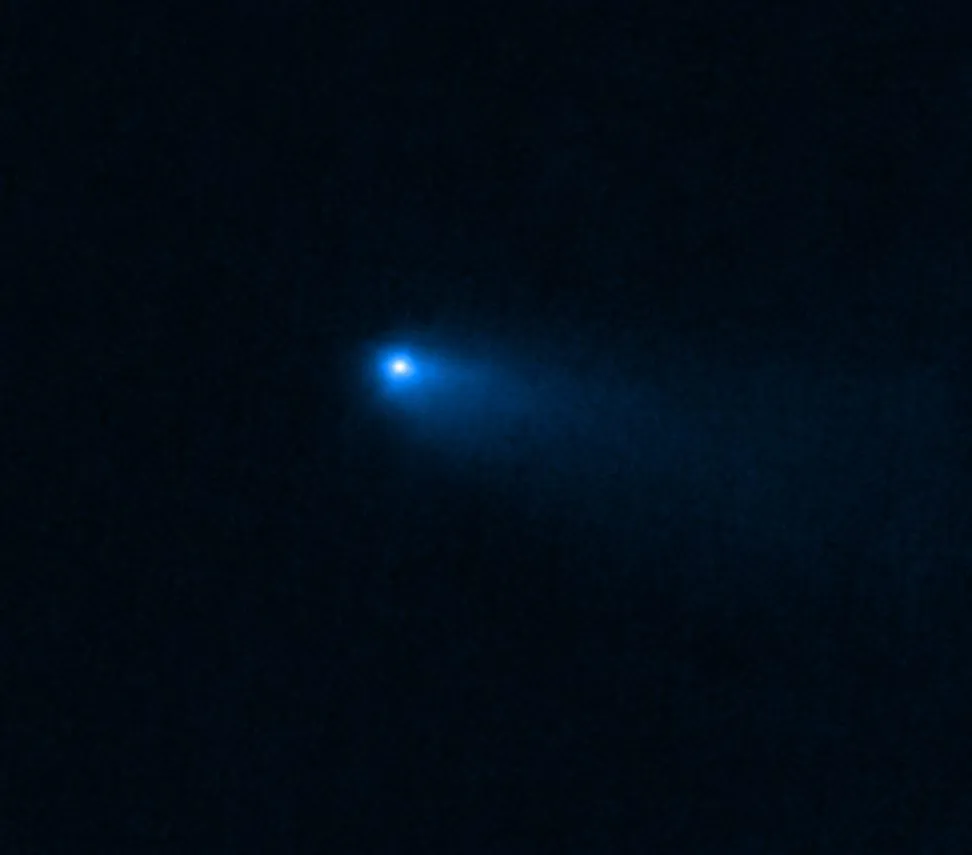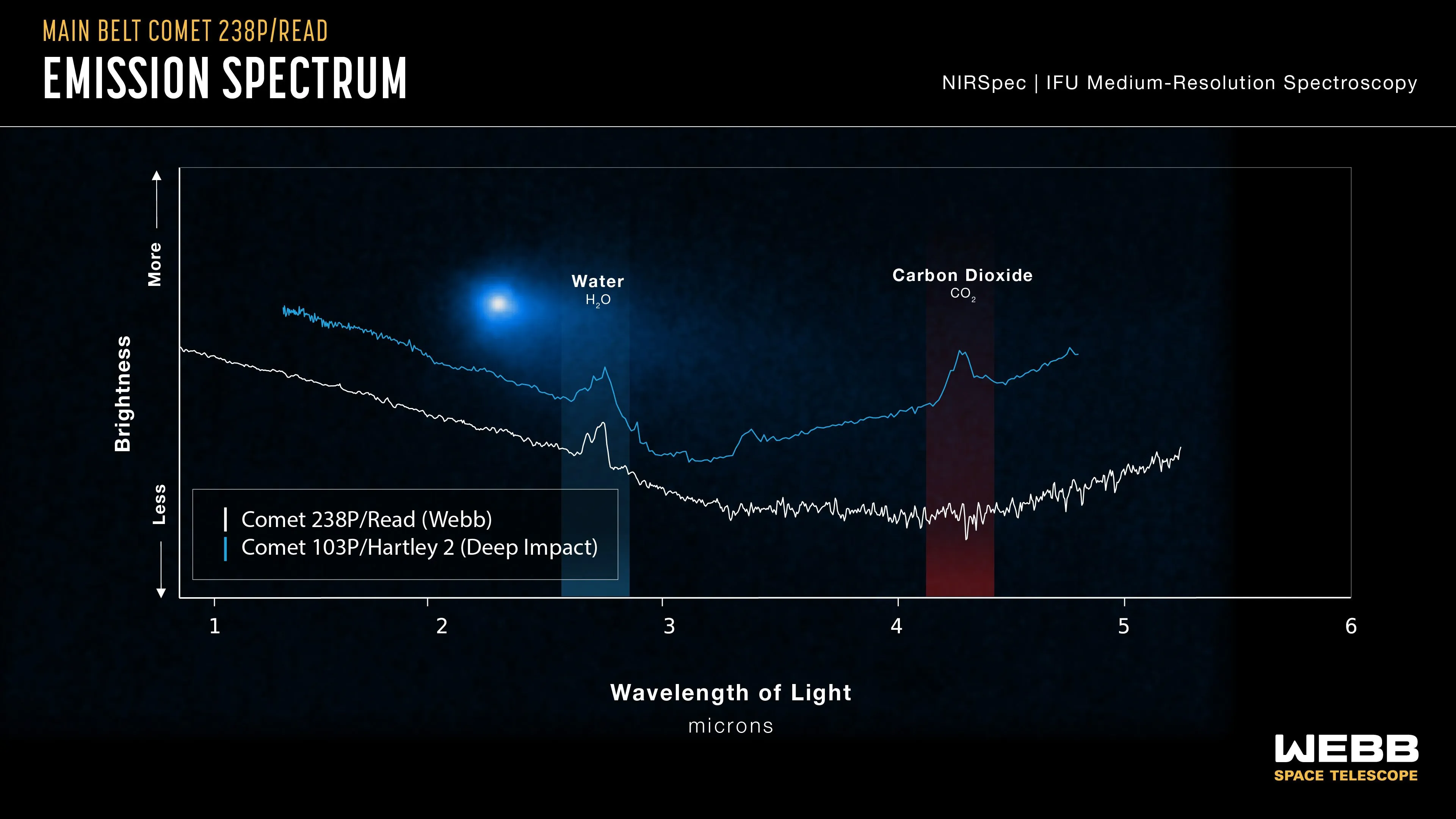发布单位:台北市立天文科学教育馆
天文学家使用韦伯近红外光谱仪(NIRSpec)首次确认了主小行星带中一颗彗星周围的气体,尤其是水蒸气,这表示来自原始太阳系的水冰得以保存在此区域中。 然而,对水的成功探测却伴随着另一个新的谜题,238P/Read彗星没有探测到二氧化碳。

图说:艺术家对238P/Read彗星的想像图,水冰在其轨道接近太阳时蒸发,形成彗发和彗尾,这是彗星与小行星间的区别。图片来源:NASA, ESA
238P/Read也称为P/2005 U1于2005年10月24日由美国天文学家Michael T. Read使用基特峰国家天文台的Spacewatch望远镜所发现。238P/Read位于主小行星带,但会周期性地显示出彗发和彗尾。主带彗星是一个相当新的分类,在此之前,我们认为彗星位于海王星轨道之外的柯伊伯带和欧特云中,这些位置离太阳够远,因此冰得以被保存住,而当彗星接近太阳时,蒸发的冰冻物质赋予了彗星独特的彗发和彗尾,这是它们与小行星不同之处。科学家们长期以来推测水冰可以保存在木星轨道内较温暖的小行星带中,直到韦伯才带来确切的证据。

图说:238P/Read彗星显示彗发及彗尾,2022年9月8日韦伯太空望远镜近红外相机拍摄。图片来源:NASA, ESA, CSA, M. Kelley (University of Maryland). Image processing: H. Hsieh (Planetary Science Institute), A. Pagan (STScI)
研究人员表示以往我们在主小行星带中看到了具有彗星特征的天体,现在透过韦伯精确的光谱数据,才肯定是水冰造成,此证明了来自早期太阳系的水冰可以保存于小行星带中。二氧化碳的缺失更是一大惊喜,通常二氧化碳约占彗星挥发性物质的10%,很容易被太阳的热量汽化。研究团队对于缺乏二氧化碳提出了两种可能的解释,一种是238P/Read在形成时含有二氧化碳,但由于温度的升高而失去了二氧化碳。尤其是位处于小行星带上更是容易如此,二氧化碳比水冰更容易蒸发,并且可以在数十亿年后渗出。而另一种可能是238P/Read在太阳系一个特别温暖的区域形成,那裡没有二氧化碳。
研究团队下一步的研究将开展至238P/Read彗星之外,去看看其他的主带彗星。小行星带上的天体又小又暗,透过韦伯终于可以看到它们的情况,并得出一些结论。其他主带彗星是否也缺乏二氧化碳?既然韦伯已经确认在小行星带附近保存着水,那么接下来通过样本采集来跟进此一发现,将能更进一步了解主带彗星,无论哪种方式,找出答案都将令人兴奋。我们生存在充满水的世界,并且充满生机,我们不确定这些水是从何而来,因此藉由了解太阳系中水的分布历史,将有助于我们了解其他行星系统,以及它们是否在成为类地行星的路上。相关研究成果发表于《Nature》期刊上。(编译/台北天文馆赵瑞青)

图说:238P/Read彗星(2022年韦伯拍摄)与103P/Hartley 2彗星(2010年Deep Impact mission拍摄)光谱数据图。两者都在与水相关的光谱区域显示明显的峰值。但238P/Read彗星没有显示存在二氧化碳的特征。图片来源:NASA, ESA, CSA, and J. Olmsted (STScI)
资料来源:NASA